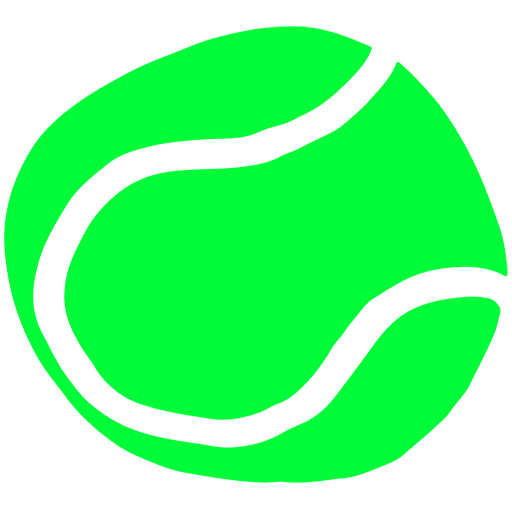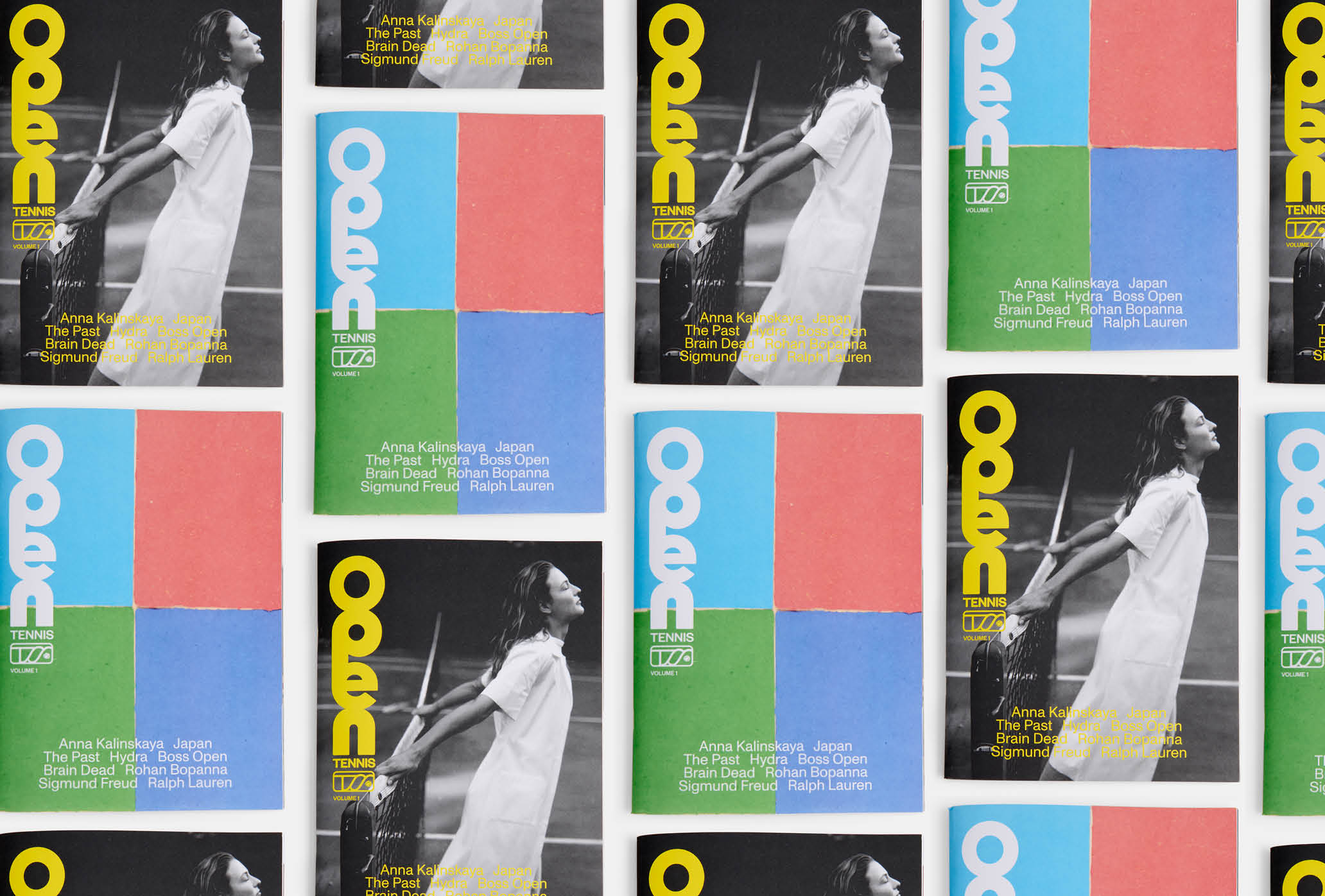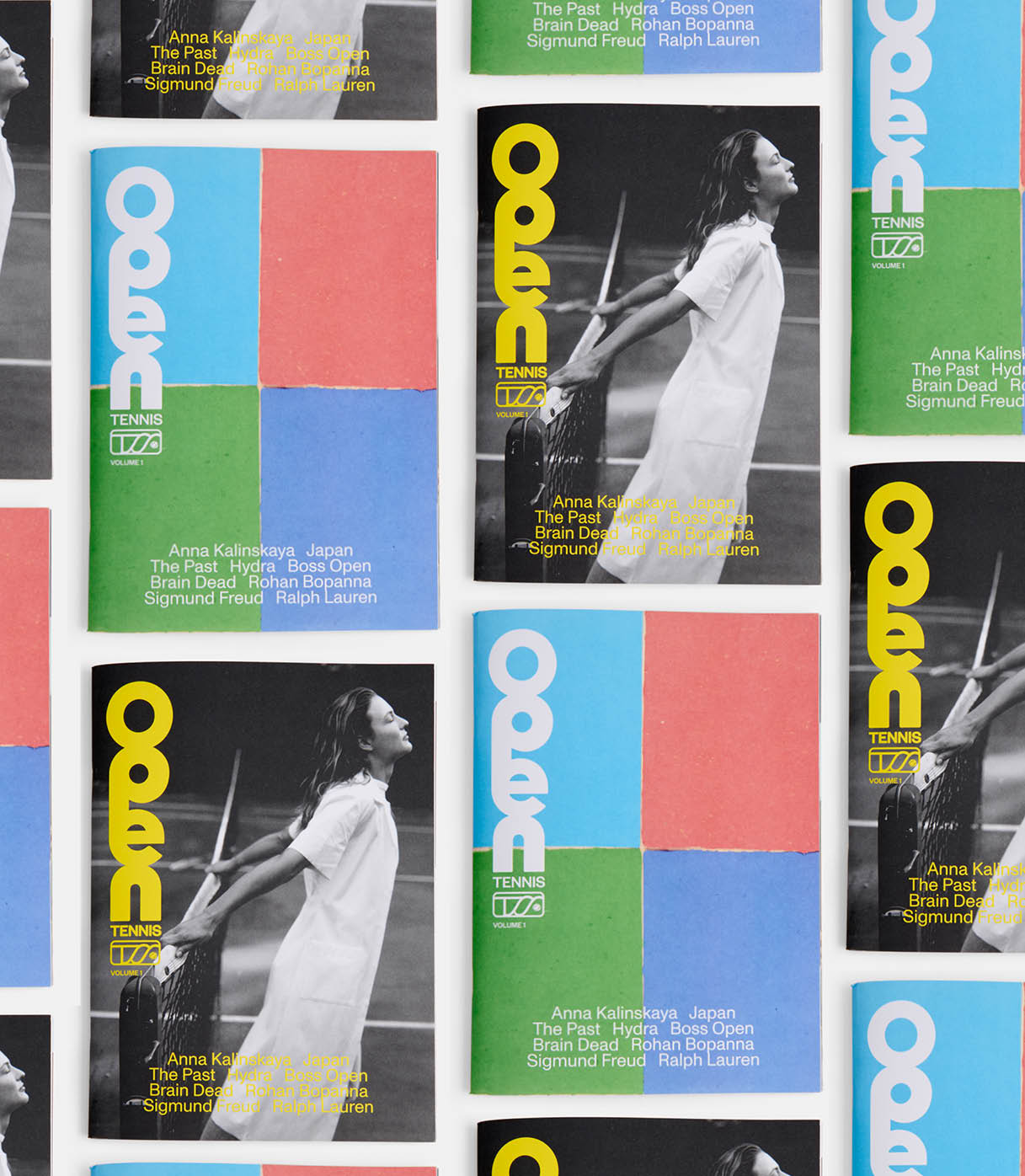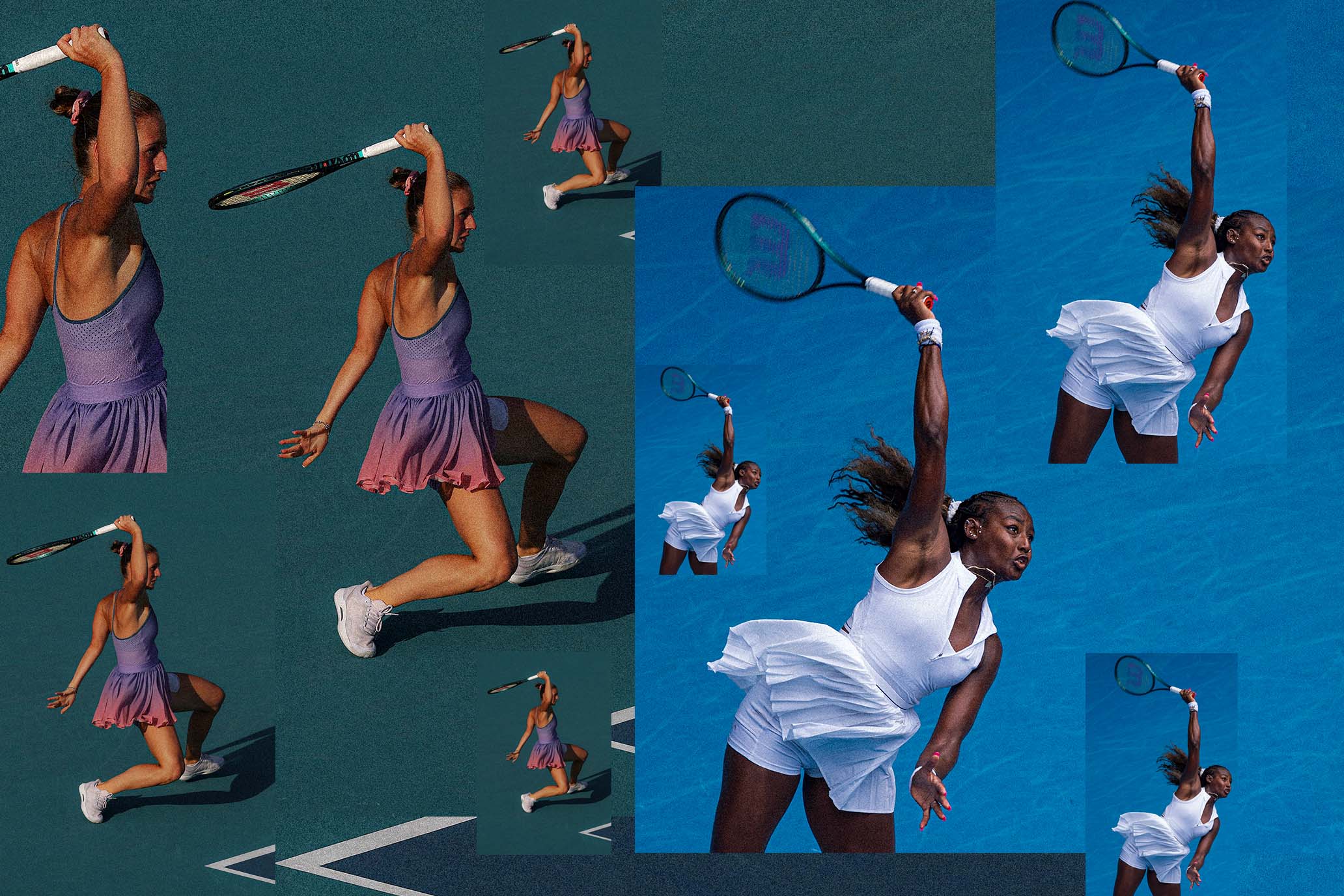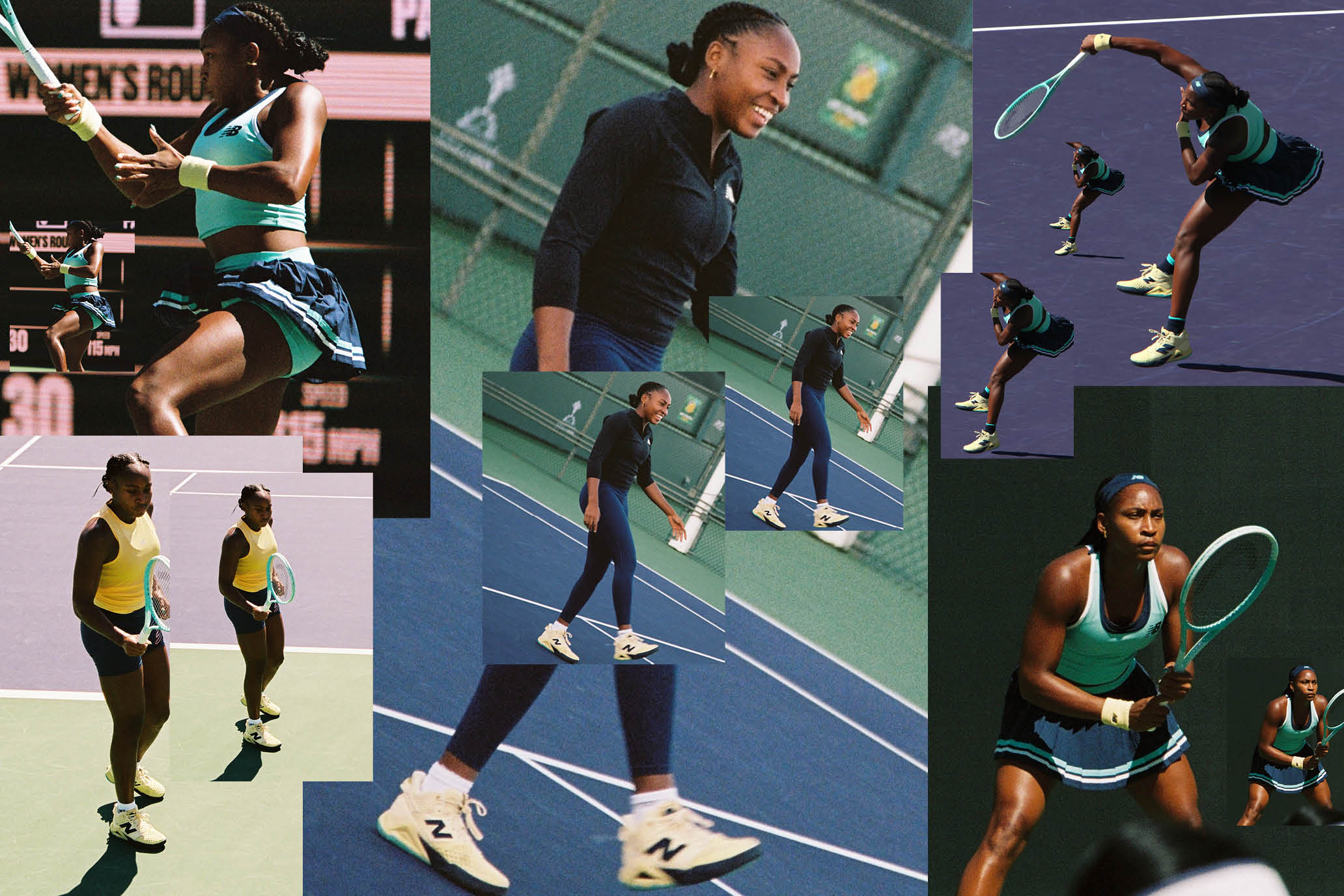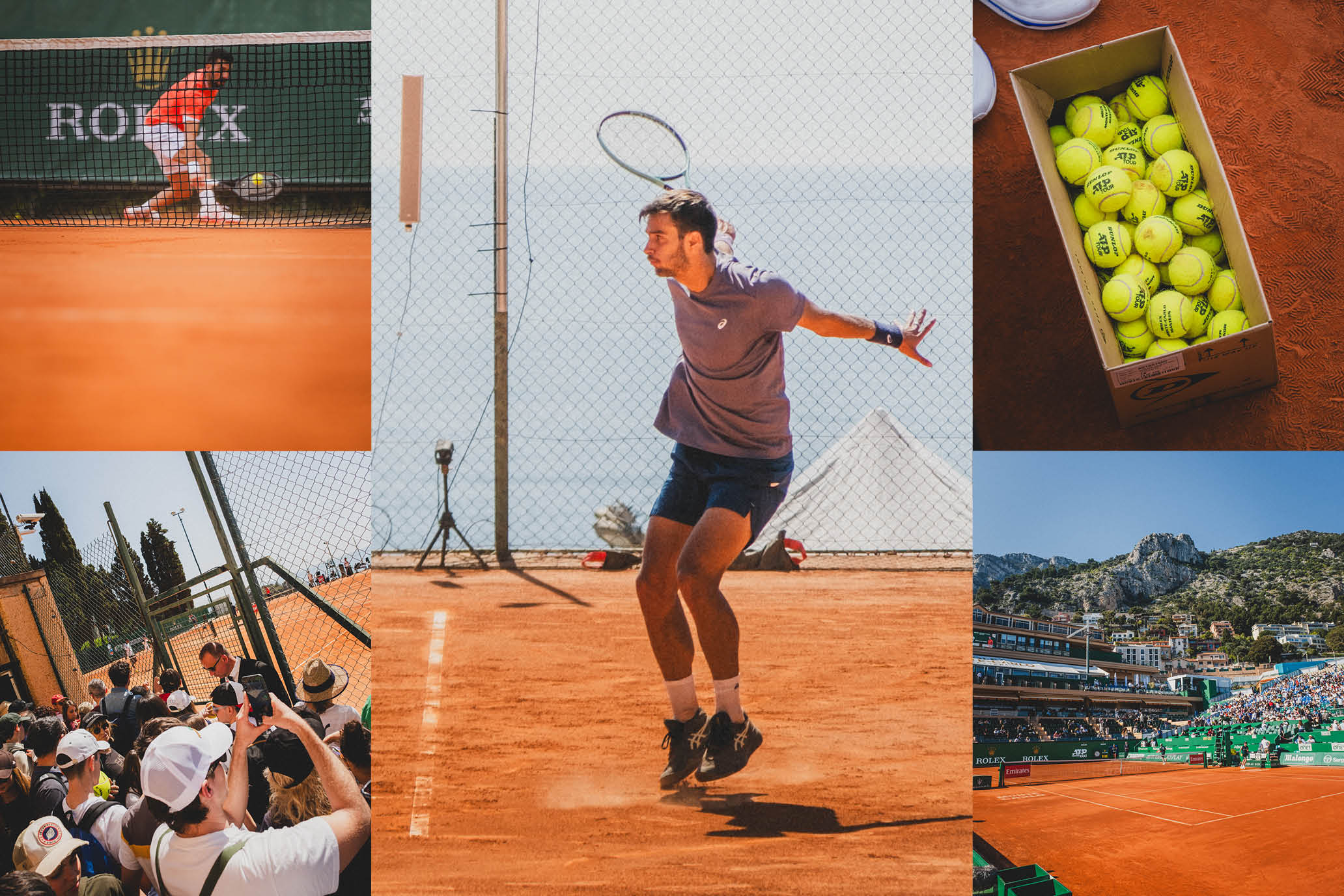Human Touch
Human Touch
Keep the Champagne on Ice for Anna Kalinskaya.
Keep the Champagne on Ice for Anna Kalinskaya.
By Raphael AbrahamPhotography by Dan MartensenStyling by Chloe Grace Press Featured in Volume 1 of OPEN Tennis — BUY
Human Touch
Human Touch
Keep the Champagne on Ice for Anna Kalinskaya.
Keep the Champagne on Ice for Anna Kalinskaya.
By Raphael AbrahamPhotography by Dan MartensenStyling by Chloe Grace Press Featured in Volume 1 of OPEN Tennis — BUY
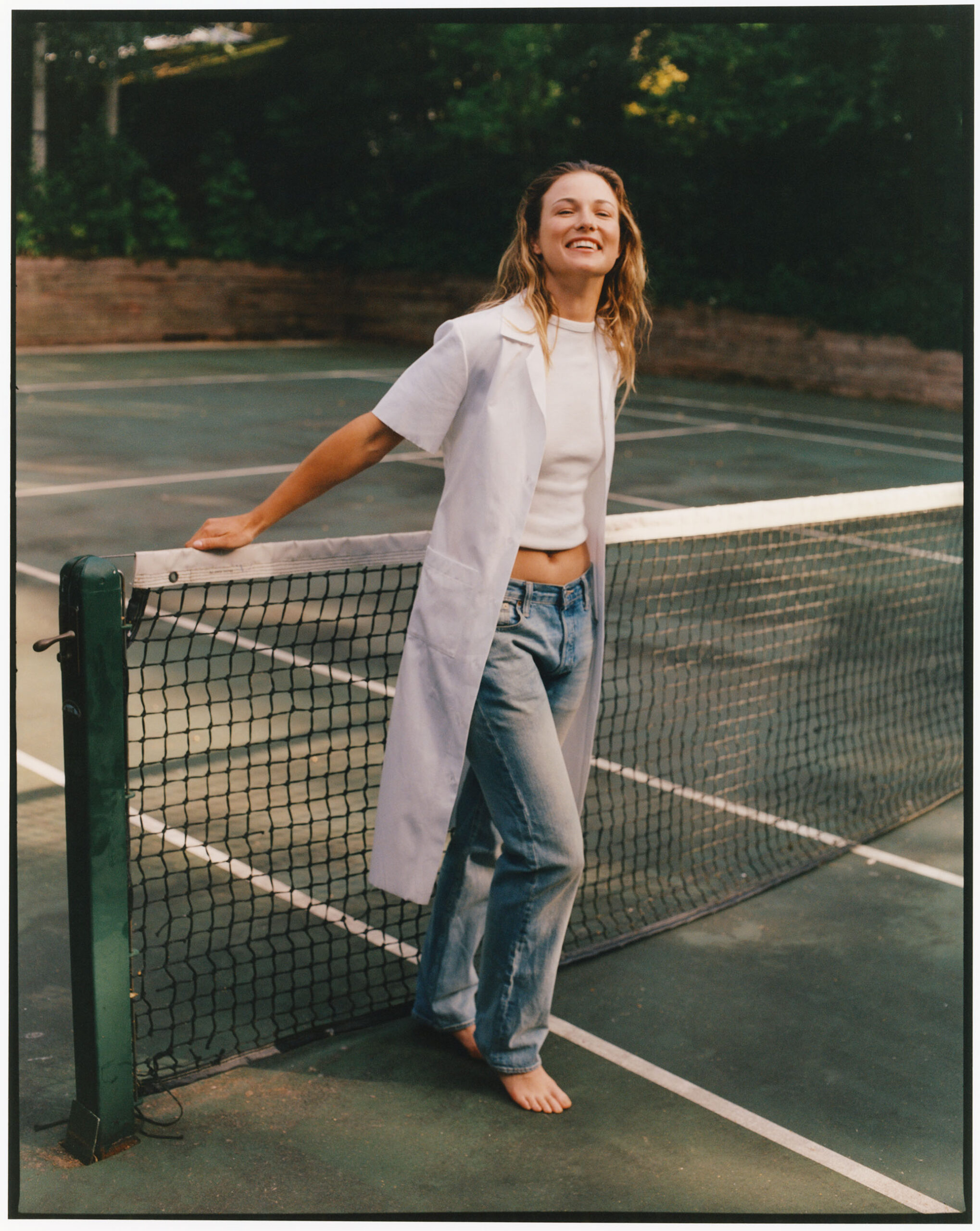

Anna Kalinskaya is in a buoyantly positive mood. It is the eve of Wimbledon when we meet in the bucolic surroundings of an English country garden, mere minutes away from the hallowed courts on which she will soon do battle.
She has reasons to be cheerful. Since the start of the year, the Russian player has risen from relative obscurity at 80 in the world rankings to 17, making the quarterfinals of the Australian Open and the final of the Dubai Tennis Championships, beating world No. 1 Iga Swiatek and No. 3 Coco Gauff along the way.
If that weren’t enough, she has also been making headlines for another reason. In May it was confirmed by Italian world No. 1 Jannik Sinner that the two are in a relationship. With the steamy tennis movie Challengers playing in theaters, social media was soon aflutter at the forming of this new sports power couple. Exactly 50 years after lovebirds Chris Evert and Jimmy Connors lifted the Wimbledon singles trophies, could Kalinskaya and Sinner pull off a similar feat?
But when we meet, Kalinskaya makes clear that she has not come to talk about Sinner. The week before, she has made the leap to grass, reaching the final of the Berlin Ladies Open, losing only narrowly to America’s Jessica Pegula (meanwhile, in another part of Germany, Sinner won the Halle tournament). Many players struggle with the shift from clay to lawn tennis, yet Kalinskaya tells me she takes it in her stride.
“People either love it or hate it, but for me it’s probably the easiest change because I like to play very fast and aggressive, and grass is perfect for that,” she says. “I had a goal to be top 20 this year. Now I reached it and I have a new goal: to be top 10 and to be consistent with my results. I love playing on grass, I love playing on hard court, so I’m very excited. And my No. 1 goal is to stay healthy so I can work and show what I’m capable of.”
It is her third time in the Wimbledon main draw, and her first since 2021. “I couldn’t play one year here because of the situation in my country, and last year I was injured, so finally this year I’m back.”
It hardly needs stating what “the situation” is. Kalinskaya’s mother and grandmother hail from Dnipro in eastern Ukraine, which on the day after Kalinskaya’s first-round Wimbledon match is the target of a Russian drone and missile strike that kills five people and injures 53.
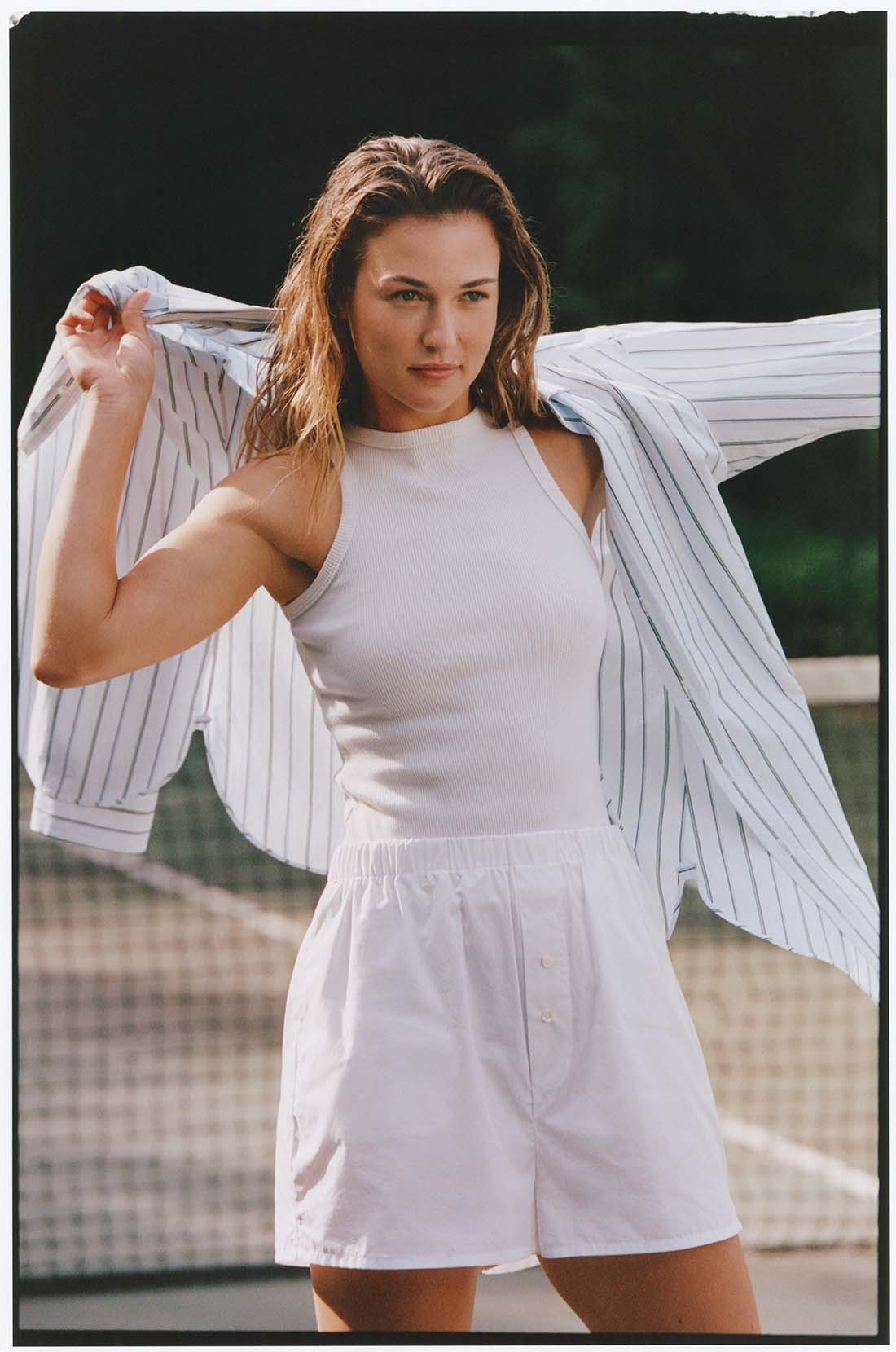

However, I am told before we sit down together that politics is off the table and nor will she speak about Ukraine. It is no surprise. Most Russian and Belarusian players remain tight-lipped about the war, understandably so given that they or their families still reside in Putin’s Russia. In March 2022, two weeks after the invasion of Ukraine, Kalinskaya appeared to offer a silent protest by wearing shoes bearing the words “No war” at the Indian Wells tournament in California.
_________
Though she was born and grew up in Moscow, it was in Ukraine that Kalinskaya’s love of tennis was born.
“When I was little, every summer I used to spend with my grandmother and my cousin, who used to play tennis,” she says. “I wanted to do whatever she was doing, so I decided to try it. I had a little racquet, and I remember one day my mom asked me if I wanted a new one just for myself. I guess it was someone’s racquet [I was using], not even mine. I said yes.”
Kalinskaya, a sociable child, found that it was not only the game but the camaraderie it offered that she relished. “I started to play with kids in a group. I enjoyed it because I was always very friendly, and it was like a social thing for me to play with [other] kids. I liked to compete, and I still love to compete. That’s why I’m doing it.”
Unlike many other players on the tour, Kalinskaya was not born into a tennis family. Rather, her parents favored another racquet-based game: badminton.
“It’s a very difficult sport,” she says. “I played for a couple of years, and I was actually doing well. I did three sports at the same time—I used to swim, too—and I was good in all three. But I got bored of swimming and playing badminton…and my parents supported my decision, so I continued to play tennis.”
Now that she is a professional tennis player, can she beat her parents? “That’s a good question, because last December I played badminton with my mom, and she’s not…” she pauses momentarily, as if pondering how to put this politely, “she’s not 25 like me, but she can still beat me. It’s very difficult, a lot of cardio. I’m glad I stopped,” she concludes with a chuckle.
The sporty streak in her family runs deep and extends to her brother, Nikolay, who plays soccer for FC Pari Nizhny Novgorod. He is her only sibling, five years her senior. “He inspires me a lot because he’s very professional and I see how much he works,” she says. “Even on his days off, he goes to the gym. It seems like he doesn’t have days off.”
Leisure time is vanishingly rare on the tennis tour, too, leaving scant opportunity for pursuing outside interests or cultivating friendships. Nevertheless, Kalinskaya has established a close bond with her compatriot Daria Kasatkina.
“We have known each other since we are 10,” Kalinskaya says. “And I’m friends with Aryna Sabalenka. It’s difficult with our schedules to find time to go for dinners, but yeah, I would say that those two are my closest friends.”
When I contact Kasatkina over email, she tells me: “Anna has always had so much potential and she has so many weapons on the court, it was just a case of her bringing it all together. She showed glimpses at times in big matches like against [former US Open champion] Sloane Stephens in New York [in 2019], where her big personality can shine.”
Sabalenka adds in a text message: “She has become a better fighter, not giving up that easily, definitely started to play a bit more aggressive, with more confidence.”
But, notes Kasatkina, her recent rise in the rankings and newfound fame hasn’t changed Kalinskaya. “For me she is the same girl, which is amazing, and it’s so good to see her doing well now.”
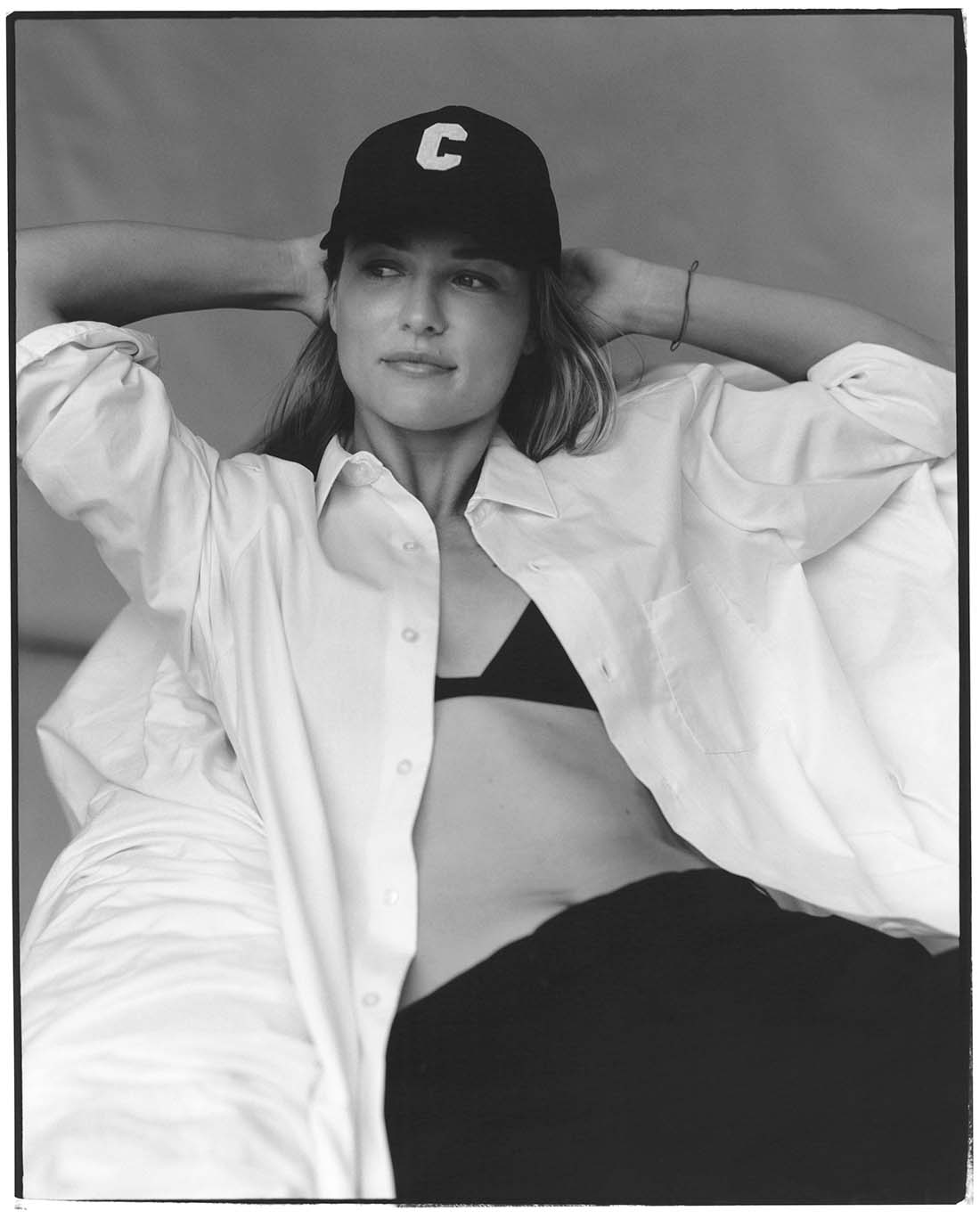

As well as a sometime top 10 player and Wimbledon quarterfinalist, Kasatkina is an outspoken critic of Russia’s war in Ukraine and its record on gay rights. She is also a prodigious vlogger with a popular YouTube channel on which Kalinskaya is an occasional guest. In one recent post, Kasatkina teasingly asks her pal: “Carrot cake? Yes or no?”—a barely cryptic reference to the ginger-haired Sinner, to which Kalinskaya responds, “Fuck you,” before the two collapse into giggles.
As Kasatkina puts it in an email: “Anna is so funny and has a quick mind. She is good fun to be around and is a great person.” How would she describe her sense of humour? “Dark, mischievous and on point!”
In another episode of Kasatkina’s vlog, Kalinskaya lets slip a scathing comment about her fellow tennis players: “There are many snakes on the tour, let’s be honest.”
Would she care to elaborate now on this observation? “It’s impossible,” Kalinskaya says. “You have to be so careful because at the end of the day, you have the same job. But a lot of people are jealous and can be double-faced—that’s what I meant by saying ‘snakes.’”
It’s the kind of content that tennis fans lap up, showing another side of the players whose comportment on and around the court is almost always oh-so-polite and cautiously diplomatic.
“Dasha [Kasatkina] has her YouTube channel, and I think [American player] Taylor Fritz has one, or his girlfriend [influencer Morgan Riddle]. It helps tennis to become more popular. And now all these fashion brands have tennis trends. I see more and more people wanting to play tennis, and it’s really great. I think for women’s tennis what helps a lot is actually fashion.”
Style and beauty are two of Kalinskaya’s passions away from the court. Asked to name her favorite brands, she says: “I like Chanel, I like Miu Miu. I like a lot what they did with tennis skirts, matching them with sneakers. I would say those are my top two.” She also admits to an obsession with footwear: “I like shoes…a lot.”
How many pairs does she have? “A lot,” repeats the Imelda Marcos of tennis. “I saw [Australian player] Alex de Minaur was asked if has more than 100 pair of shoes. He said yes and I think I have more than him for sure, if you combine high heels and normal sports shoes.”
He probably doesn’t have high heels, I suggest. “Well, who knows?” she says with a wry smile. She seems competitive even about shoe ownership. “I’m sure with the girls on tour, I win.”
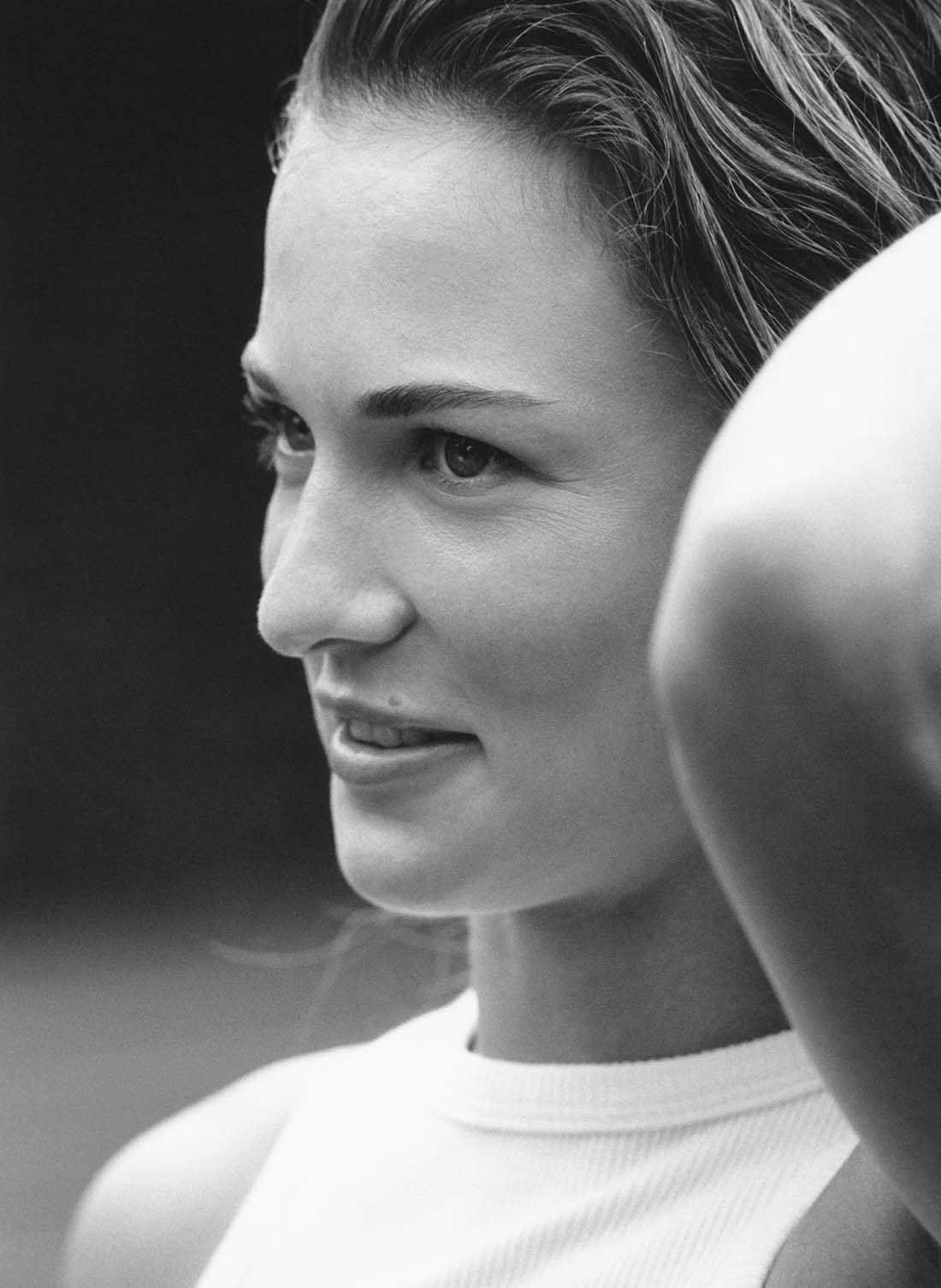

Another interest is visiting museums and galleries. She has already made time for a pre-Wimbledon excursion to London’s Natural History Museum, and we discuss a possible trip to Tate Modern. In Rome, she says, she wanted to see the Vatican. For the art or also for religious reasons? “For the art.”
What about watching tennis? “I like to watch men’s tennis,” she declares. “I feel they have more options of shots and more tactics.” Does she have a favorite player? “I’m not going to say,” she says, turning her head away in smiling defiance. “Next question!”
This is not, I assure her, an attempt to steer her into talking about Sinner. She can name anyone she likes. “No, it’s too dangerous,” she says with a laugh, before offering finally, “Okay…Roger”—a shrewd and safe answer. But there is a sting in the tail. When I ask later if there were any players she looked up to while growing up, she says: “Nadal. I was obsessed with him. But then he lost a match against Roger. And I became a Roger fan. Rafa had a few match points and lost. I was so disappointed. So after that I never watched him again.”
Brutal. But Kalinskaya is unafraid to speak her mind, at least when it comes to tennis. And she too has taken some hard losses, falling to Pegula in Berlin after being match point up six times. Nevertheless, she was gracious in defeat, telling her opponent in her runner-up speech: “If we play like this against each other every time, I will be happy for both of us.”
When it comes to losses, she tries to retain a philosophical outlook. “I always look at the bigger picture. So I take more positive from losing in Dubai. I was not feeling great there. But I pushed myself to the final and I almost won the tournament, so for me it was incredible. Of course it’s disappointing to lose, and now I lost another final [in Berlin], being so, so close, but that’s just the game. I hope I can use this experience for a more important final in London or maybe at the US Open.”
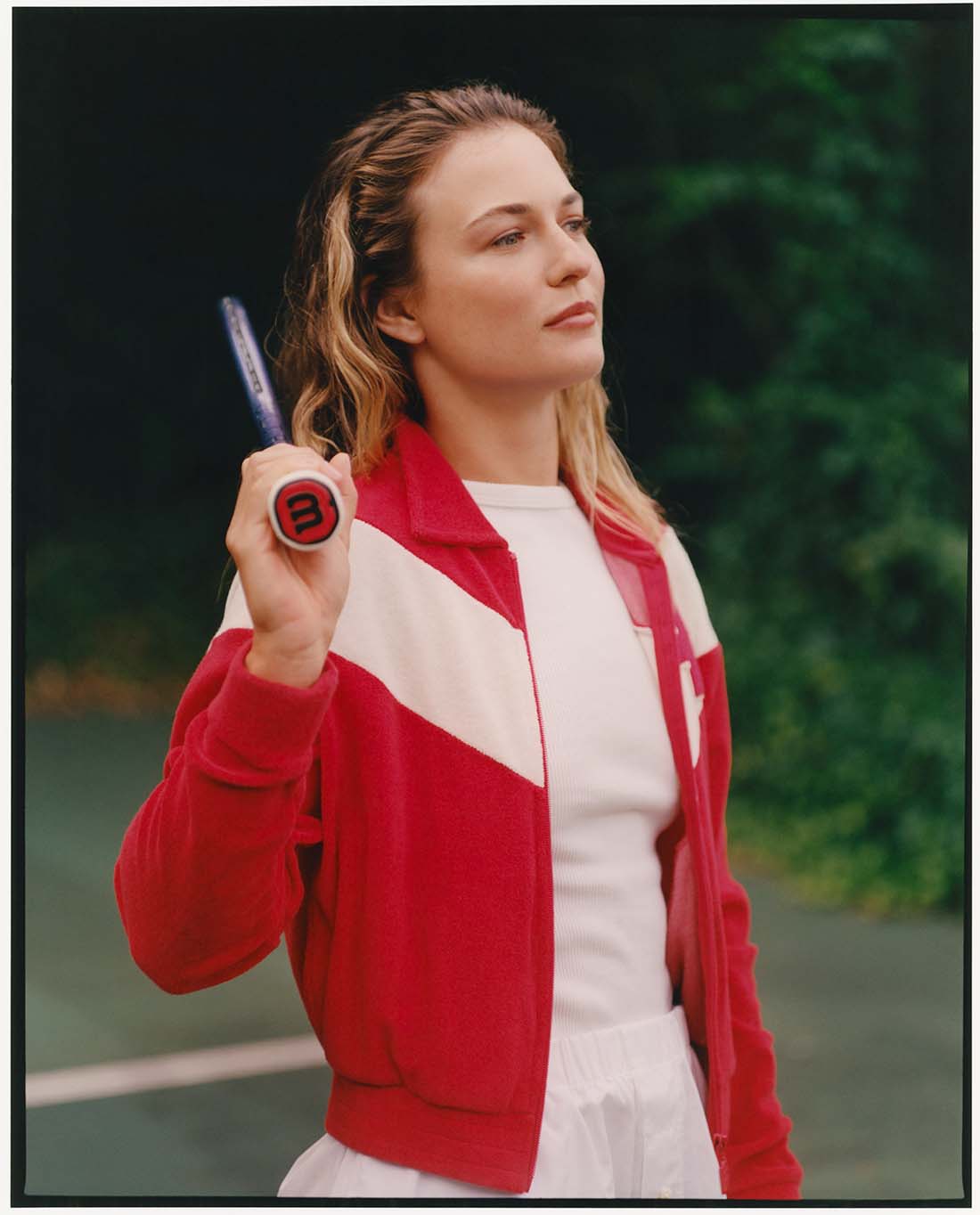

When I ask how she works on her mental game, she rolls her eyes wearily and emits a small groan.
“The mental part is super difficult,” she admits. “You miss a lot of things being on tour; you miss your family, you can’t have a normal life, you always travel…. It’s a very challenging sport. You don’t fight only against your opponent, you fight against yourself. And it’s very important for me to have good, positive people around me. That’s the key…. At the end of the day we’re just human, and you just wish you have a person who understands you.”
_________
The following week at Wimbledon, she gets off to a flying start, dispatching Hungary’s Panna Udvardy in the first round, the Czech Marie Bouzkova in the second, and her compatriot Liudmila Samsonova in the third—all without dropping even a set.
Kalinskaya on court is grace personified, generating easy power without any hint of a grunt, her flat, penetrating shots skidding off the slick surface. In the stands sit her Argentine coach Patricia Tarabini and the doting Sinner, looking saintly in a pristine white hoodie that conceals his face and keeping a low profile. Kalinskaya too looks calm and contained, her victory celebrations muted. Coming off court, she is mobbed by a small swarm of autograph hunters and selfie seekers.
But in the fourth round against 2022 Wimbledon champion Elena Rybakina—Kalinskaya’s Centre Court debut—disaster strikes. The fragile humanity she referred to becomes all too clear in the second set when she calls for medical assistance and is finally forced to retire with a wrist injury. Her “No. 1 goal to stay healthy” has temporarily been derailed.
“It’s very frustrating, very sad,” she says in the post-match press conference. “It’s probably my favorite tournament. But I’m human and I can’t fully control my body. I have to accept it and just find out what’s going on right now, recover, and prevent it in the future.”
My mind returns to something she told me in that cozy garden before the tournament.
“Every week, more or less, you lose, but you need to keep going. The next day, you can have a different tournament already. And you need to recharge, recover, and forget. And it’s important to learn from when you lose. Sometimes you don’t have much time, but also, it’s a great opportunity. Because there are many tournaments and you have another chance.”
There will be more tournaments, more runs at Grand Slams. When Kalinskaya talks about eventually winning one, it is in terms of “when” rather than “if.” And afterward there will be celebration. (As Kasatkina reliably informs me: “Anna knows how to have a party correctly.”) When I mention that Novak Djokovic famously indulged after winning an Australian Open by eating a single square of chocolate, Kalinskaya looks appalled.
“Really? I’m going to have a glass of champagne for sure when I win a Grand Slam,” she says.
Maybe two?
“Or a bottle…and don’t ask how many pairs of shoes I’m going to buy.”
